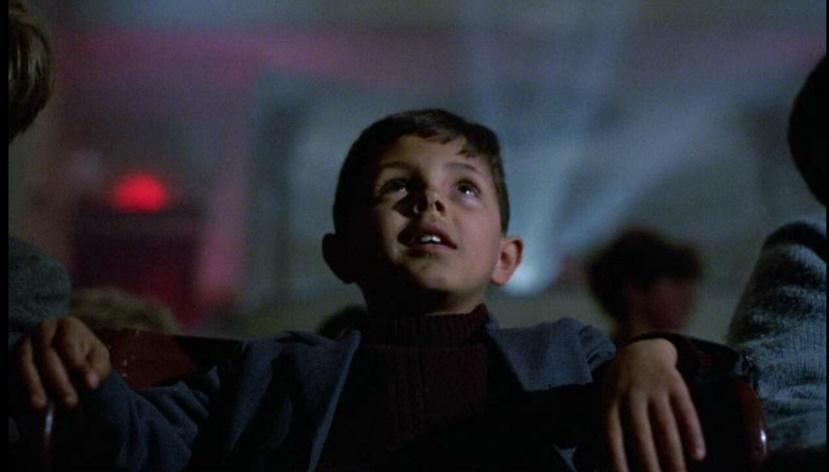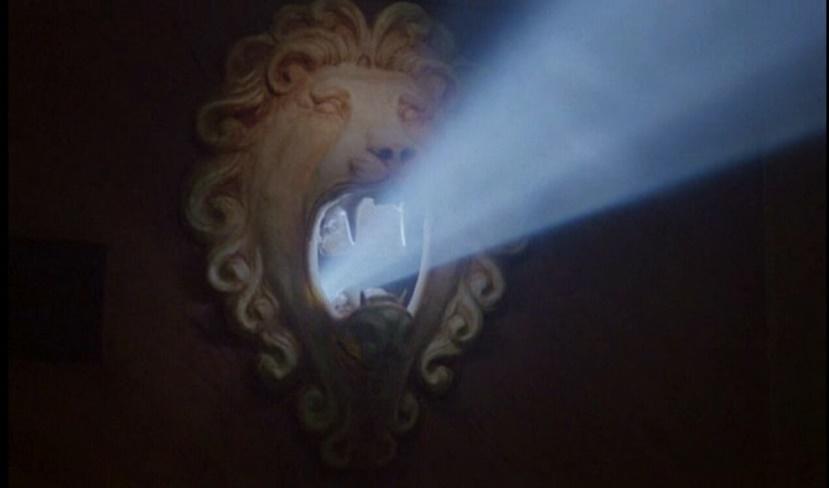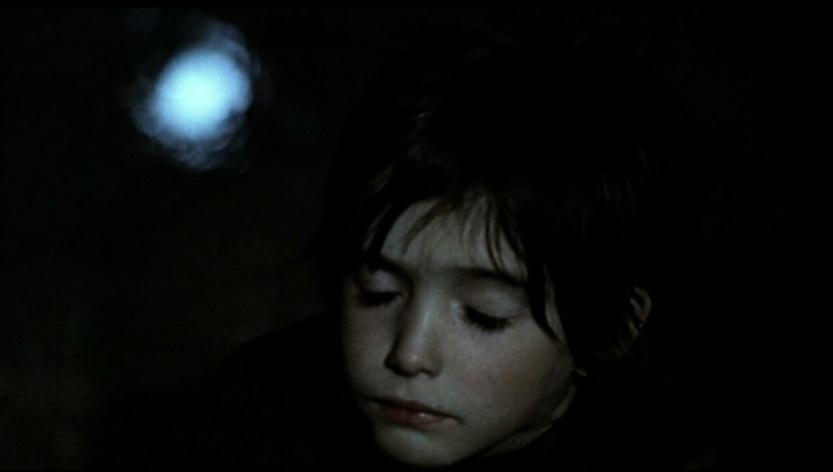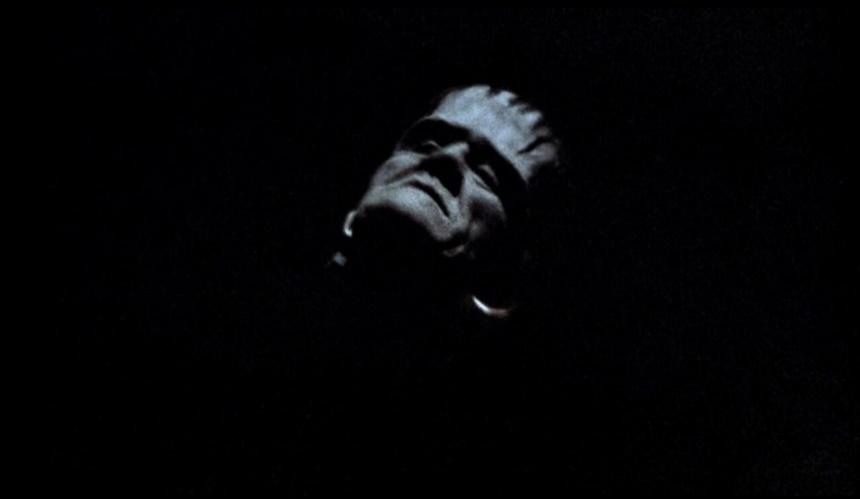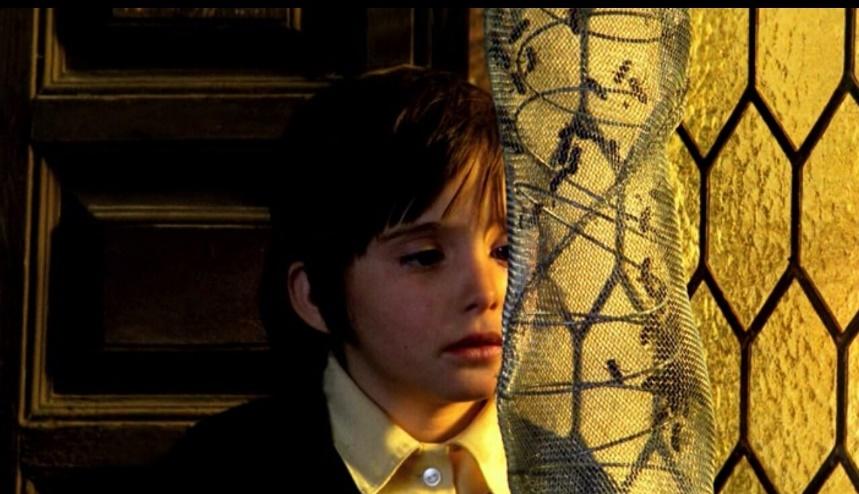Brief Overview of Films
The Spirit of the Beehive (1973) and Cinema Paradiso (1988), shot by Víctor Erice and Giuseppe Tornatore respectively, refer to the representation of the impact of cinema on children and the perception of the world through their lenses. The first film is a story about a little girl, Ana, who is impressed by the famous Frankenstein movie directed by James Whale and the horror stories about the spirit whispered by her older sister.
Ana persistently visits an abandoned house in the middle of a fields, sincerely believing that the ghost will be there. The parents have little interest in their child: The mother consistently writes to one of the Republicans who had once been her fiancé, while the father works in the apiary all day long. The girl accidentally meets a soldier who fled from the persecution of the Republican forces, and Ana comes to the conclusion that he is the very monster that she waited for for so long. However, after the soldier is shot, she becomes shocked and afraid.
The second film focuses on a Sicilian boy, Salvatore (Toto), who enjoys flashing back to his childhood and youth. Being a famous director, he learns from his girlfriend that his mother called and is informed that someone named Alfredo is dead. In his reminiscence, Salvatore remembers several stories of the 1940s and the 1950s.
Introduction
These two films involve beautiful stories told about the time of childhood, which is remembered forever by all five human senses and even a kind of sixth sense. Cinema is represented as a real spirit of the hive that attracts and frightens at the same moment yet helps to overcome the power of time. Although children grow up and become adults, their childhood memories, perceptions, and beliefs remain intact, providing a strong basis for their spiritual lives that in fact cannot be overestimated due to its integral nature in every human.
This paper aims to compare the mentioned films based on their key theme of cinema’s perception through children. First of all, it seems appropriate to provide historical and cultural background in order to achieve an in-depth understanding of the messages conveyed by both directors. After that, it is necessary to compare the films by discussing the ways the cinema affects children and several other factors that lead to the formation of their worldview. Furthermore, the discussion of interweaved reality and fantasy will be conducted. Finally, the review of filming and directing techniques will allow for a completion of a comprehensive comparison of the films.
Historical and Cultural Background
In The Spirit of the Beehive, the action takes place in 1940 in one of the Castilian villages of Spain. The film metaphorically ridicules the times of the dictatorship of General Franco, reflecting the horrors of the era. Precisely speaking, a new leader took a course on the alliance with Hitler and Mussolini, thereby organizing the inner life of the country according to the example of Fascist countries (Payne 127). The slogans of this authoritarian regime were focused on controlled economy, corporatism, and social harmonization. In everyday life, the so-called Roman salute was introduced: It became obligatory to show a raised right arm with an open hand (Payne 354). The domestic policy was characterized by a relentless struggle against the Communists. Franco became the Generalissimo and declared himself a Caudillo (a leader).
In its turn, Cinema Paradiso is shot with the background of the 1940s and the 1950s in Sicilia. This period is also characterized by the alliance of Italy with Fascist Germany and the establishment of the dictatorial regime. The Nazi oppressors launched a terror in the country with mass executions of hostages and deserters who refused to join their army (De Grand 50). Tens of thousands of people were forcibly deported to Germany for forced labor. At this point, the invaders had to encounter the resistance movement. However, it is rather significant to pinpoint that none of the films involves political or military scenes, yet they are guessed by the context. For instance, Ana’s father repeatedly compares the beehive with a real-life flow, or the adult life of Salvatore represents several political disputes through which an observer comprehends the time period of the film and, hence, the political and cultural background. Baetens states:
The frequent use of allegorical representations and children as main characters are two well-known “symptoms” of artistic critique in difficult political situations. In The Spirit of the Beehive is clearly such an allegory, and the framing of an allegory through the eyes of a child helps keep it as vague as possible. (60)
Furthermore, these hidden signs allow for understanding the message the directors wanted to convey.
Cinema as a Tool of Children’s Perception of Life
It goes without saying that both films involve several themes and conflicts. However, this essay will explore the power of children’s attitudes and reminiscences in their life. The complication begins with the cinema – Paradiso and an unnamed rural touring cinema. If Ana watches Frankenstein, Toto remembers several old films he watched in his childhood and matches them to the events of his life. Barnett states that in the Cinema Paradiso, “We see the people go to the cinema to dream: by watching great movies, they forget all their problems” (par. 14).
Toto perceives the cinema as a true kingdom of dreams and a paradise where they find their immortality, nostalgic emotions about irretrievably gone events, and good humor and love toward enchanted naive reactions (screenshots one and two) (Schmerheim 132). The mentioned attitude is quite evident as, after all, every person came from childhood as well as cinema that was watched in the early years. The movies sometimes can be more real than one’s life—even a burned and dilapidated movie theater still looks like the abode of memory with never disappearing spiritual beings that are much more alive and fulfilling than the life of the adult Salvatore, who is painfully dissatisfied with the way he lives and behaves.
Similar to the above film, The Spirit of the Beehive attracts a spectator by its penetration of childhood. What is missing in enthusiastic Don José from a lesson of anatomy? It is, indeed, something incredibly significant, namely, eyes that refer to the children’s eyes full of curiosity, like a solitary, bottomless well among arable lands. The world around Ana is endless yet is limited by a view (Arata 30). It is full of images and visual aids, including a house, watches, light, and a poisonous mushroom. Imagination animates objects and objectified spirits, while everything leaves a trace in the mind of the little girl: things, people, and spirits. The magnificent Ana with huge brown eyes is a symbol of the deceived childhood with a strong faith in the future still. It seems that the offender appears thanks to the imagination of the girl. Thus, three points of view on this person can be distinguished: the artist believes in his creation, the society classifies the deserter as a criminal, and Ana believes in a good spirit. The perceptions of the girl become a symbol and expression of the whole picture that is free from unnecessary ambitions and social clichés. Ana believes in life despite the death and unselfish help instead of punishment.
Reality and Fantasy (Human Subconscious)
The observation of death can be seen as one of the main driving factors in both films. Cinema acts as a repository of the memory of these children, promoting stream of consciousness that, in turn, integrates reality and fantasy. It is also essential to pinpoint that the seemingly unimportant characters of the films present some thought-provoking roles. For instance, Toto’s friend Alfredo suffered from the fact that he was not the director of the film and did not realize that without him, a film piece would be just a thing on the shelf. Toto comprehends, mostly unconsciously, that it is Alfredo and his work that make viewers a little different and powerfully affect him.
It is essential to note the fact that Ana’s position toward cinema is more serious than that of Toto and is also supported by her sister Isabel, who tells her sister that the monster shown in the movie is real and that everyone willing to communicate with him should just close his or her eyes and imagine. Furthermore, Isabel theatricalizes a scene of the attack to frighten Ana. In effect, the little girl strongly believes in the existence of a spirit. After the so-called spirit was killed, Ana experiences shock and cannot understand what had happened. On screenshots three and four, one can note that Ana tries to call him, and he comes merely in her imagination. Thus, the director depicts the interlacement of fantasy and reality.
Likewise, the film by Erice is something more than a metaphorical description of a single society. Behind the sophisticated interpretations, it is possible to miss the point: an amazing naturalness with which the little Ana acquires a mystical and cinematic experience (Miles 198). If the children in the film are opposed to adults, then the film is opposed to all the isolation and madness that is akin to adults and the insight into the true nature of the world. This film is slightly melancholic and thoughtful, multi-layered, and metaphorical; it tells about the life of people, but only at their edges, by comparing them with the bees that constantly work in a beehive. It seems that a real life exists only in childhood, according to the film. In childhood, there are so many amazing, unsolved, and even mystical issues, while adulthood turns to a honey bee that should serve the beehive, having no time and desire to enjoy the life.
At the same time, both Ana and Toto are affected by their parents, like any other child. The parents are like shadows for these children because they are looking inward and totally deprived of basic opportunities of expression. According to Hope, “One function of the film’s outwardly nostalgic ambient was to provide a reassuring though temporary refugee against disorienting effects of social and cultural change” (69). When the war that they regarded as a nightmare ended, many returned to their homes and gave birth to children, but something inside of them was severely crippled—that is why they seem absent. As a result, where adults are killing each other in the heat of the war, hunting for deserters, and living in the captivity of the stillborn ideas of their pasts, children become carriers of a spirit. Someone can blame the directors in the excessive desire for manipulation of spectators’ emotions—others, in a slightly predictable script. However, these are exceptionally representative Italian and Spanish films with completely astonishing endings.
Filming and Directing Techniques
Tornatore shot his film as a kind of requiem for a dying cinema and theaters. Some critics “read the Cinema Paradiso as postmodern nostalgia, offering a conventional pop-cultural version of history instead of a more genuine relation to the experience of the past” (Galt 163). In those years, the production of the Italian Empire of Dreams fell to some very deplorable numbers, and the director decided to remind the public how it was a decade ago, in his childhood (Galt 159). The paradox is that this film turned out to be so successful that the director did not dare to disclose the true causes of the creation of this film.
The structure of the film is based on the reception of flashbacks. The very tone is sentimental, touching, romantic, and light. The childish, enthusiastic fantasies are confused with childhood memories and intertwined with the uncomfortable reality of the poor Italian province. The actor performing as Toto, a ten-year-old Salvatore Cascio, was found by the director among many other boys that he viewed in Sicilian schools. Perhaps the decisive factor in favor of his selection were his huge dark eyes, reminiscent of children of neorealist films. Thus, the atmosphere of Tornatore’s film is undoubtedly nostalgic—a sad memory of those times when people went to the movies and when there was good and varied cinema able to capture the young, pure souls and when both the filmmakers and the audience were fanatically devoted to the cinema. Speaking of genre, it is possible to claim that this is drama, where sad and funny and the sublime and daily are inextricably merged together as in real life. The director takes hold of the plethora of opportunities by using appropriate shooting and filming techniques involving light, sound, focus, and others.
In The Spirit of the Beehive, the world is filled with the tense glow that implicitly “electrifies” the frame. The scenes of interiors are filled with honey tones with viscous light flowing through the windows and echoing the shape of honeycomb. The scene presented on screenshot five is an especially noticeable one: The face of Ana is lighted by either externally pouring light or somewhere from inside that coincides with the color of the beehive. This color scheme penetrates a view deep into the mind of the main character and allows for feeling the same emotions yet only to some extent.
It should be noted that “the script is laconic (many of the best sequences are entirely silent), and the shooting style says it all” (“The Spirit of the Beehive” par. 32). The elliptical film structure, where some points of the narrative are deliberately omitted, appeals to a viewer’s engagement so that he or she can develop the meanings. In the latter, there is no shortage; for example, the dual image of the monster implies sophisticated yet clearly ambiguous interpretation—some people interpret him as a symbol of Franco’s Spain, while others consider this image as one that is devoted to victims of the dictatorial regime. Almost ethnographic sketches of life in the Castilian countryside and an apparently filmed live viewing of the Whale film in a makeshift movie theater complete the monotonous rhythms of interiors. The frames are static and balanced, and that also gives them the properties of picturesque. Erice paid precise attention to the texture of objects, their shape, and the distribution of light and shade, which specifies the number of objects, filling them with symbolic power.
Conclusion
In conclusion, it should be emphasized that both films represent children and their attitudes towards the cinema that, in turn, becomes a world of dream and a source of reflection of a real life. Both films have similar cultural and historical post-war-time backgrounds that caused apathy and emptiness in parents and caused their children to admire cinema movies. However, the pivotal difference between those films is that The Spirit of the Beehive is more pessimistic and touching, while Cinema Paradiso reveals more optimistic yet lost images. In any way, both films are excellent examples of the reflection of childhood beliefs and perceptions related to the world where reality and fantasy are interconnected and blurred.
Works Cited
Arata, Luis O. “‘I Am Ana’: The Play of the Imagination in the Spirit of the Beehive.” Quarterly Review of Film Studies, vol. 8, no. 2, 2009, pp. 27–33.
Baetens, Jan. “‘Transmedial Aesthetics Is Ordinary’: Some Remarks on Victor Erice’s ‘The Spirit of the Beehive.” Kritika Kultura, vol. 17, no. 2, 2011, pp. 57–69.
Barnett, Laura. “Salvatore Cascio: ‘Cinema Paradiso Is about the Power of Dreams’.” The Guardian, Guardian News and Media. Web.
De Grand, Alexander. Fascist Italy and Nazi Germany: The “Fascist” Style of Rule. Psychology Press, 2004.
Galt, R. “Italy’s Landscapes of Loss: Historical Mourning and the Dialectical Image in Cinema Paradiso, Mediterraneo and Il Postino.” Screen, vol. 43, no. 2, 2002, pp. 158–173.
Hope, William. Italian Cinema: New Directions. Peter Lang, 2005.
Miles, Robert J. “Reclaiming Revelation: Pan’s Labyrinth and The Spirit of the Beehive.” Quarterly Review of Film and Video, vol. 28, no. 3, 2011, pp. 195–203.
Payne, Stanley G. The Franco Regime, 1936–1975. University of Wisconsin Press, 2011.
Schmerheim, Philipp. Skepticism Films: Knowing and Doubting the World in Contemporary Cinema. Bloomsbury Academic, 2016.
“The Spirit of the Beehive.” Classic Art Films. 2015. Web.
Appendix
